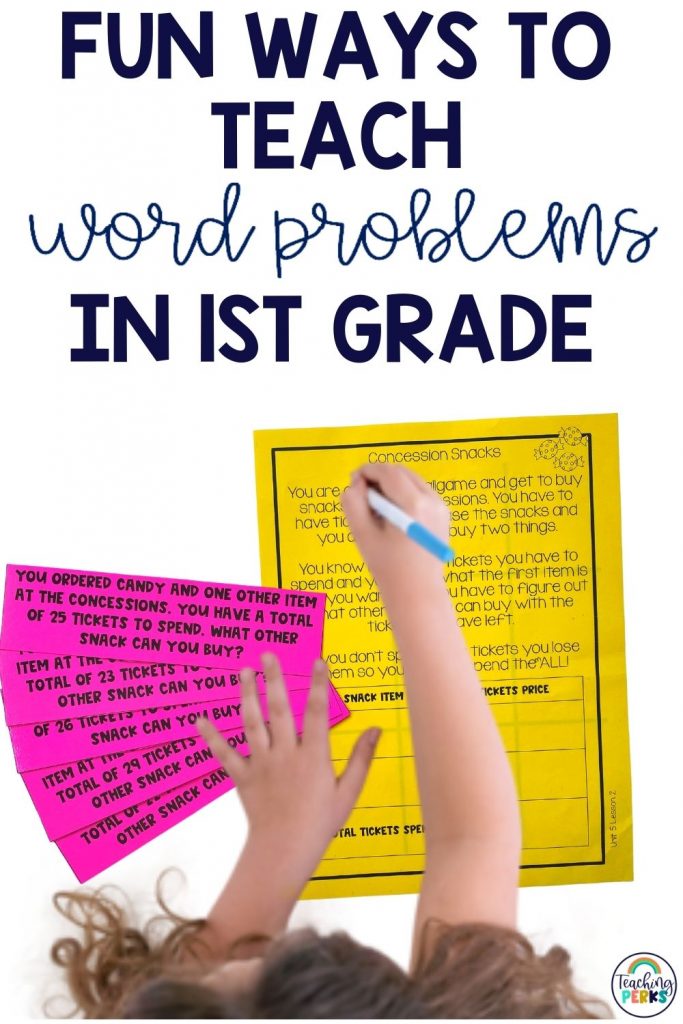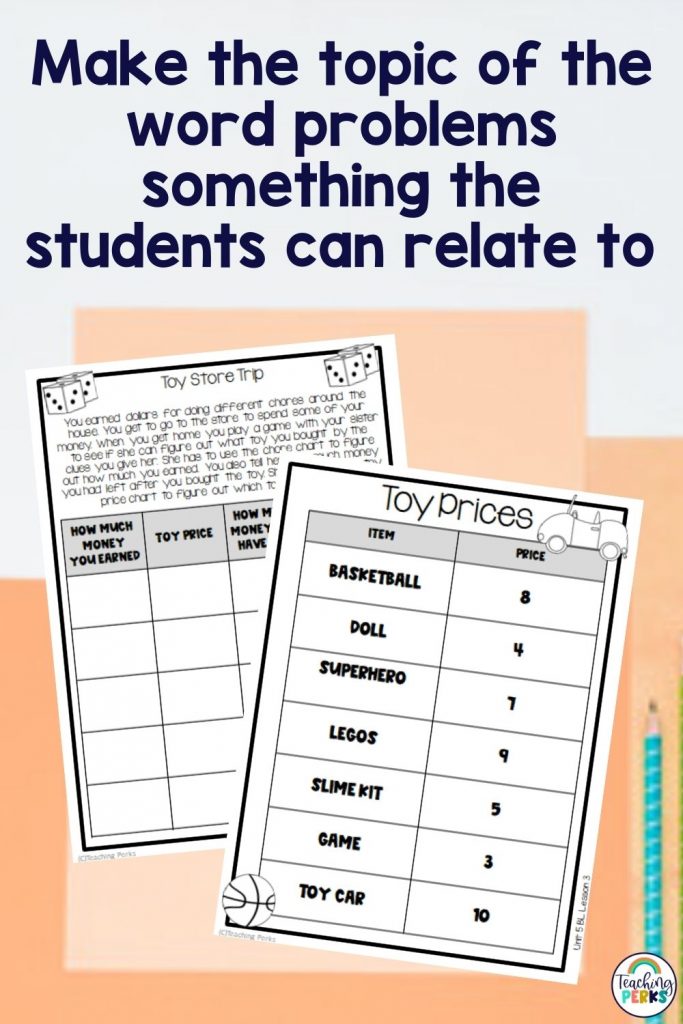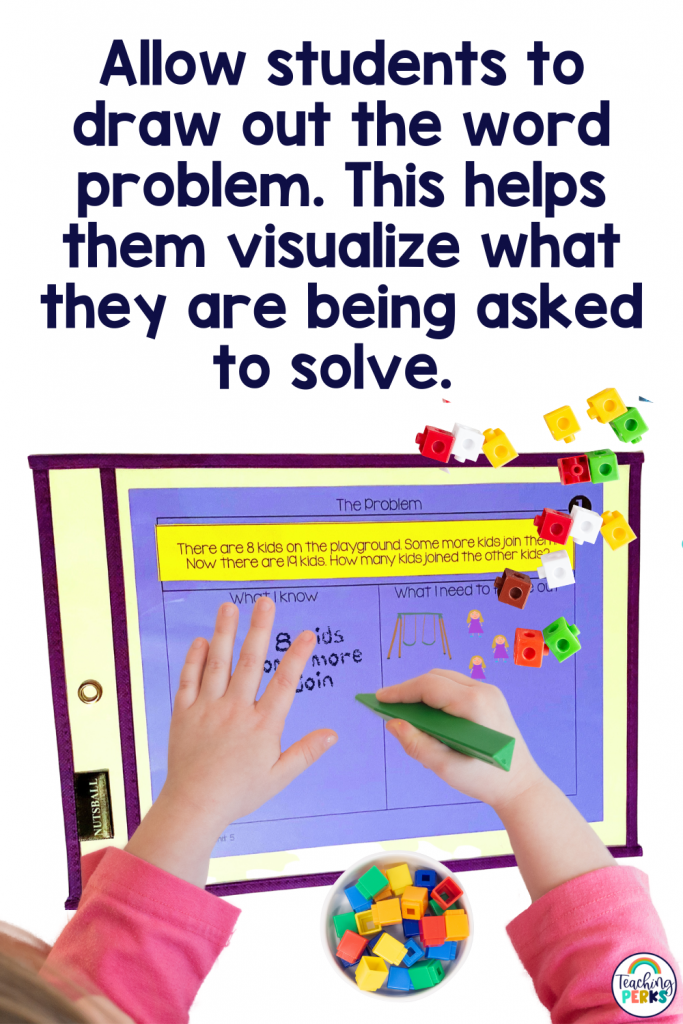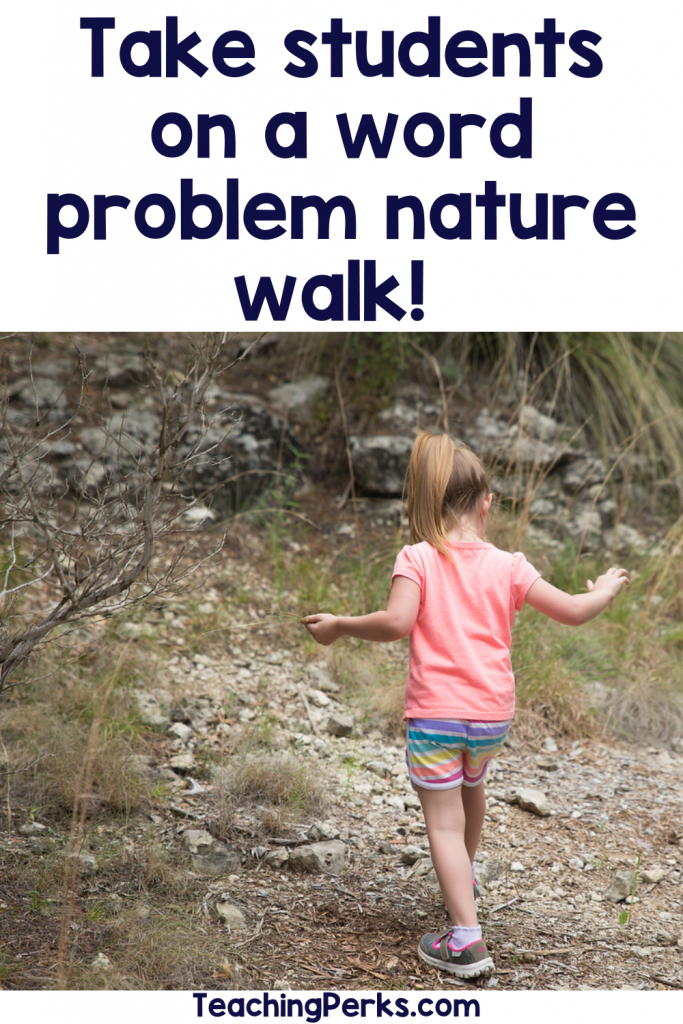Math word problems are some of the most difficult problems for students to master… especially because they have to rely on their reading comprehension skills as well! Here is a word problems worksheet bundle and other fun strategies for solving word problems that you can use with your students!


Make It Relatable
One of the best ways to use a word problems worksheet is by making it relatable to your students! For example, writing a problem on the board but switching out the character for the name of someone in your class can make word problems more enjoyable.
Additionally, use topics that your students know and enjoy! For example, if you have a lot of students who like sports, using different types of word problems about baseball equipment could be a great option. The goal with word problems is to make them as easy to understand as possible… and sometimes, that means using language that speaks to your students!

Brush up on Addition and Subtraction Skills
Since a word problems worksheet and activities focus on addition and subtraction, reviewing these skills is definitely necessary. For example, you can check out this blog post about adding three numbers to find different ways to prep students for more difficult story problems. Or, if your word problems worksheet or activities are going to be focusing on larger numbers, you might want to review how to add and subtract multiples of ten! Students need to have these strategies for solving word problems otherwise they will not be successful.
Use Props
Word problems are difficult because the numbers and questions are “hidden” in the story. One of the best strategies for solving word problems is to use props! By using props, you can help students visualize what is going on and break down the problem in an easy-to-understand way!
For example, one of the word problems from the 1st Grade Word Problems Activities Bundle talks about a student having 5 stickers at the beginning of the day and 12 at the end. You can help students visualize this by giving each a pack of stickers to “act out” the word problem or you can add stickers to a sheet of paper in a small group setting.

Another activity that even gets students outside is to go on a nature walk and collect different items they find (for example, leaves, rocks, sticks, or even trash!). Then, they can bring their items back to class and the teacher can model word problems using what they found. For example, “Cara has 14 rocks and 9 sticks. How many more rocks than sticks does she have?” Students will be able to use these real objects as math manipulatives to help them solve the problems!
Want to take it a step further? You can split them into small groups to create their own word problems for other groups to solve! Have students write out the world problem on butcher paper and leave the problem and items at their table. Then, the groups can switch tables and use the sticks, rocks, leaves, etc. to help them find the answer! Letting students create their own real world word problems is a great way for them to develop a deeper understanding.

Additionally, if you don’t have props, you can have students draw it out. One word problems worksheet in the activities bundle gives students the space to draw out the problem in order to find the correct answer!
Work on Comprehension Skills as Well
Math word problems also allow your students to work on their reading comprehension skills… They will need to break down the sentences to understand what they need to solve!
To help your students comprehend the word problems, try first reading the problem all the way through. You can then ask students what they think the problem is about by finding key words and important information. This could include deciphering what they are adding/subtracting.
Then, take it one step further and break down the problem by sentence. Starting with the first sentence, read it out loud and then ask the students what they learn. Bonus points if you have some manipulatives as you work through the problem or have students draw it out as you go!
Work your way through the problem sentence by sentence. When you get to the end, ask students what they are trying to figure out (for example, how many total apples Johnny has or how many pieces of pizza are left). Utilizing reading skills is one the most important strategies for solving word problems.

Helping them determine what the word problem is asking will make them much easier to understand! And if you’re looking for some general reading comprehension strategies to help boost your student’s confidence beyond math word problems, you can check out this blog post with 15 strategies to try in your classroom!
Using a Word Problems Worksheet or Activities
When it comes to finding the best math problems worksheet or activities, you want to find content that is not only engaging but also easy to put together as a busy teacher. Giving students ample opportunity for independent work is also crucial to their success in mastering math concepts.
That’s why the Addition and Subtraction Word Problems bundle is the perfect fit! This bundle comes with 10 lesson plans, differentiated activities, games, challenges, and questions to keep your students engaged and using different strategies to work on their problem solving skills.

Not only will the bundle help students feel confident with this new skill, but it will also cover three different common core standards throughout the course of this unit!
Teaching word problems to your students does not have to be difficult… Just use strategies for solving word problems by breaking it down in a way that they can understand and use a fun worksheet or game for practice!
Make sure you subscribe to the blog for more 1st-grade teaching tips! Don’t forget to get your freebie as well!
[…] you want to read more about teaching students to solve word problems then make sure to read this post where I share fun and engaging ideas to use in your 1st grade […]